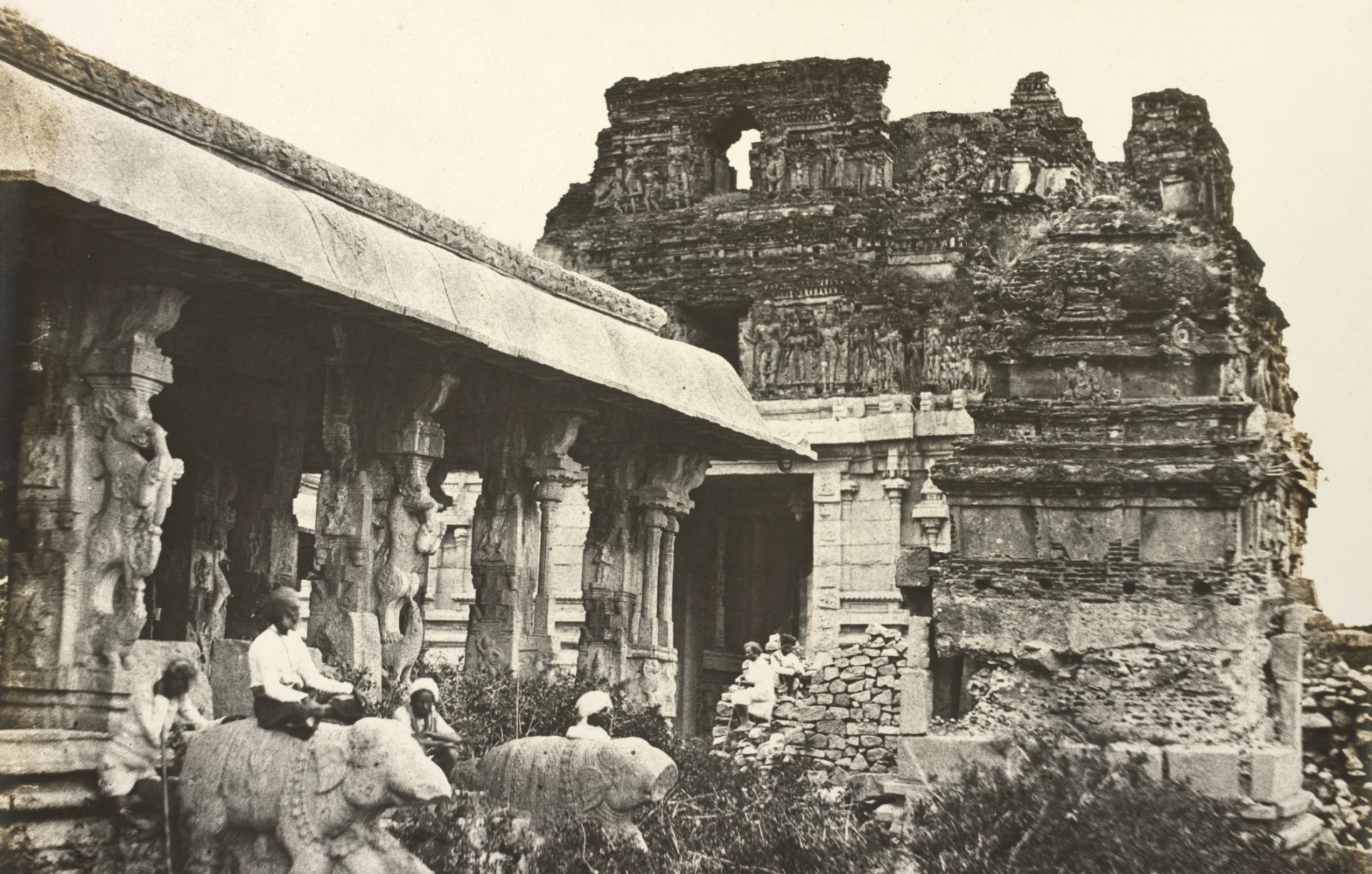The First Photographic Record of Hampi
Published on: 18/05/2018
Published on: 18/05/2018

Krishna Temple Complex, Hemakuta Hill – Photograph: Colonel Alexander Greenlaw – Wikimedia Commons

Eastern Gopura and with the now missing Lamp Column, Vitthala Temple Complex – Photograph: Colonel Alexander Greenlaw – Wikimedia Commons

Stone Chariot (Garuda Shrine) with the now missing brick tower, Maha Mandapa and Eastern Gopura, Vitthala Temple Complex – Photograph: Colonel Alexander Greenlaw – Wikimedia Commons

Vikram Nanjappa likes to be described as an interested and well-informed amateur. He draws his inspiration from the band of men called the Orientalists, most of whom were amateurs. By profession, they were soldiers and administrators. However, today, they are remembered as giants of scholarship. Like them, his field of enquiry is ‘Man and Nature : whatever is performed by the one or produced by the other’.
Craft Calling: Traditional Lambani Arts and Crafts and the Sandur Kushala Kala Kendra
The Path of a Downfall: Movements that Led to the Collapse of the Vijayanagara Empire
Hampi Ruins in the 1900s: Stellar Photographs From A Forgotten Historical Text
North Karnataka’s Threesome — Badami, Aihole, & Pattadakallu
Hampi Ruins in the 1900s — The Gateways into the City
The cute little denizens of the Kamalapura Palace, Hampi
From the Kitchens of Evolve Back – Jallad Roti | Akki Roti
From the Kitchens of Evolve Back – Qubani ka Meetha and Shahjahani ka Meetha
From the Kitchens of Evolve Back – Murgh-e-Lazeez
From the Kitchens of Evolve Back – Nizami Machali ka Salan
From the Kitchens of Evolve Back – Dum ki Nalli
From the Kitchens of Evolve Back – Anapa Ginjala Pulusu
From the Kitchens of Evolve Back – Raan-e-Kamalapura
From the Kitchens of Evolve Back – Baghara Baingan
From the Kitchens of Evolve Back – Natukodi Pulusu
From the Kitchens of Evolve Back – Tondekai Palya
From the Kitchens of Evolve Back – Royala Igaru
From the Kitchens of Evolve Back – Koli Chuttada
From the Kitchens of Evolve Back – Karibelle Cutlet
The Battle of Talikota and the Sacking of Hampi
From the Kitchens of Evolve Back – Kori Ghee Roast
Harihara & Bukka: founders of the Vijayanagara Empire
The Battle of Raichur: The Beginning of the End